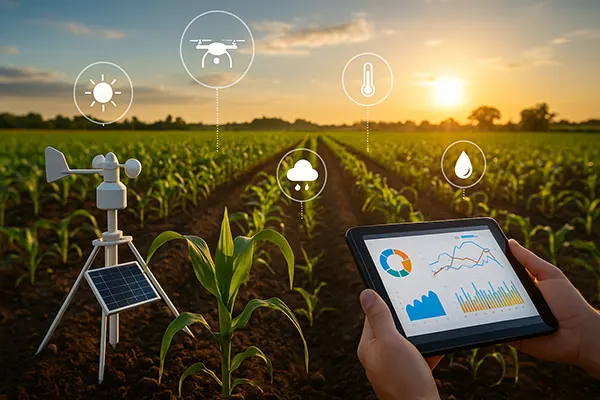Bioengineering of the Future: Organs Grown on 3D Printers

In 2025, bioengineering is no longer a dream of science fiction — it’s a rapidly advancing field reshaping the future of medicine. One of the most groundbreaking developments in this area is the ability to grow human organs using 3D printing technologies. By combining living cells with biocompatible materials, researchers have begun to fabricate tissues and, in some cases, fully functional organs tailored to individual patients.
The rise of 3D-printed organs
The evolution of 3D bioprinting has transformed regenerative medicine. Initially used for creating tissue samples for drug testing, the technology has since expanded to more complex biological structures, including skin, cartilage, and even miniature liver models. In 2025, research teams across the globe are printing heart valves and kidney tissues that mimic natural function with astonishing accuracy.
Key to this advancement is the development of bioinks — specialised materials made from living cells and hydrogels. These bioinks are deposited layer by layer to form three-dimensional structures capable of maturing into functional tissue. Advances in cell culturing and scaffold design have also enhanced the viability and stability of printed tissues.
The long-term vision is to eliminate donor waiting lists by providing custom-grown organs from a patient’s own cells, drastically reducing the risk of rejection. Some prototypes have already been implanted in animals, and early-phase human trials are being prepared under strict regulatory supervision.
Challenges and current limitations
Despite remarkable progress, fully functional 3D-printed organs are not yet ready for widespread clinical use. Vascularisation — the process of developing complex blood vessel networks within printed tissues — remains a significant hurdle. Organs require intricate vascular systems to transport oxygen and nutrients, and reproducing these networks at scale is still under development.
Another major challenge is regulatory approval. Printed tissues must meet rigorous safety and efficacy standards before they can be used in humans. This includes long-term testing to understand how printed organs behave inside the body and how they interact with other systems over time.
Moreover, printing an entire organ requires not only the right materials and cells but also an exact replica of the patient’s anatomy. While imaging and modelling tools have improved significantly, creating personalised organs still demands high levels of expertise, computing power, and multidisciplinary collaboration.
Global leaders and research breakthroughs
In 2025, countries such as the United States, South Korea, Japan, and the United Kingdom are leading research in bioprinting technologies. Institutions like Wake Forest Institute for Regenerative Medicine and South Korea’s POSTECH have reported successful developments in printing vascularised tissues and functioning organoids.
UK-based company FabRx has also made headlines by combining 3D printing with pharmaceutical applications, pushing the boundaries between medicine and engineering. European regulatory bodies are working to develop standardised frameworks to accelerate safe adoption of printed tissues in clinical environments.
China has emerged as a significant player as well, with government-backed initiatives supporting large-scale investment in biomanufacturing. Universities in Shanghai and Beijing are exploring neural tissue printing and spinal cord repair using customised scaffolds derived from patient-specific cells.
Collaboration across disciplines
Progress in this field is not solely driven by biologists. Engineers, chemists, data scientists, and regulatory experts play essential roles in bringing bioprinted organs closer to reality. AI-driven modelling now assists in predicting how cells will behave when printed, improving accuracy and reducing material waste.
Cross-border collaboration is also intensifying. Multinational research programmes funded by the EU and WHO support knowledge exchange, ethical framework development, and joint trials to ensure safety and efficiency.
Philanthropic organisations and private investors have begun backing long-term bioprinting projects, recognising both the humanitarian impact and commercial potential of lab-grown organs. Their support has made it possible for small research groups to access cutting-edge equipment and global expertise.

Outlook and ethical considerations
Looking ahead, 3D organ printing could drastically change organ transplantation, trauma care, and even cosmetic surgery. Artificial skin and facial reconstruction are already in clinical use, and further progress may extend to printed lungs or hearts within the next decade.
However, such revolutionary potential brings important ethical questions. Who gets access to printed organs first? How can costs be managed to ensure fairness in healthcare systems? How should failures or complications be addressed?
There’s also the matter of genetic manipulation. As researchers begin to print hybrid tissues using human and animal cells, the boundaries of ethical science become increasingly complex. International dialogue and clear guidelines are needed to prevent misuse and to maintain public trust in the field.
The future of personalised medicine
Bioprinting offers a glimpse into a future where medicine is no longer reactive but predictive and tailored. Custom organs printed from a person’s own DNA will not only treat disease but help prevent complications associated with transplants, including immune rejection and prolonged recovery.
Patients with rare conditions or specific anatomical needs will no longer be bound by the limitations of donor supply. Printed tissues could be used for rapid surgical repairs, prosthetics, or drug testing — all in ways previously unimaginable.
Ultimately, the future of bioprinting rests on continued innovation, open ethical dialogue, and global commitment to safe medical advancement. With coordinated effort, it holds the promise of rewriting the rules of healthcare and human longevity.


